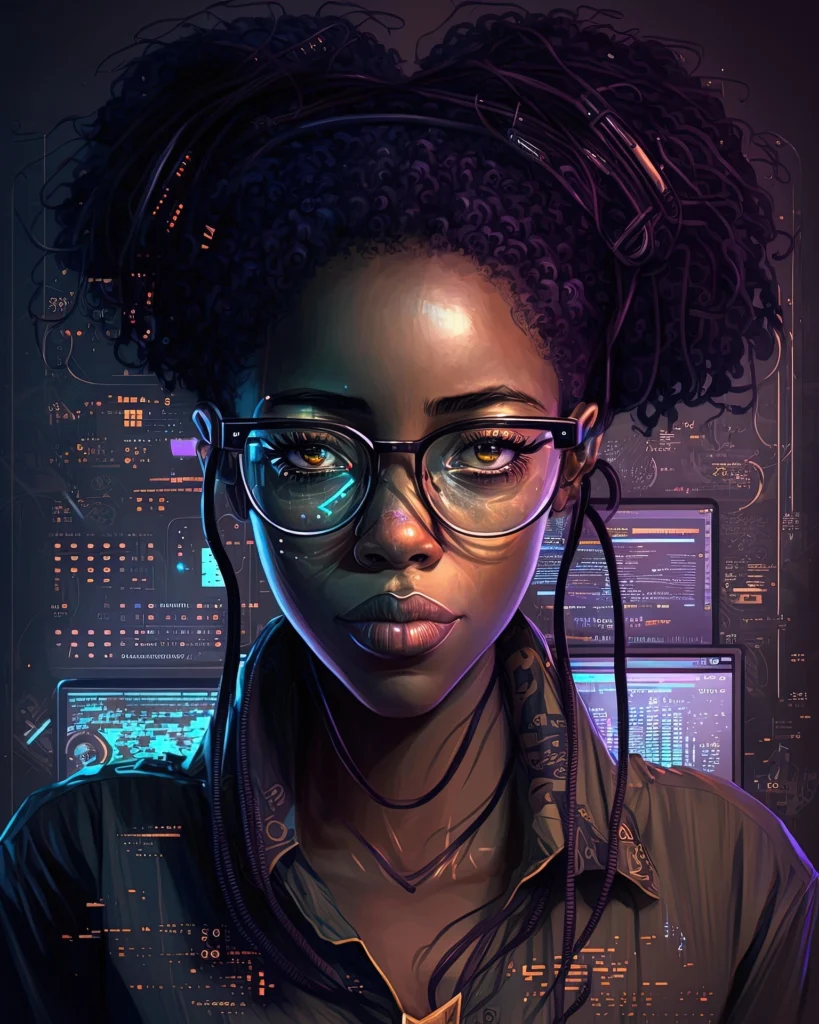Ready to Build Your First AI App? Here’s Why You Should Start Today
Artificial Intelligence isn’t just for big tech companies anymore—it’s powering the apps we use every day. From chatbots that answer your questions to recommendation engines that suggest what to watch next, It is everywhere. And here’s the exciting part: you don’t need to be a machine learning expert to build your own AI-powered app.
Thanks to beginner-friendly tools, APIs, and frameworks, creating an app that uses AI has never been more accessible. Whether you’re a student, a new developer, or someone curious about tech, this guide will walk you through the process step by step.
Here’s what we’ll cover:
- The tools and technologies you’ll need (don’t worry—they’re simple to set up).
- A clear, beginner-friendly project you can build to get hands-on experience.
- Tips and insights to help you avoid common pitfalls and stay motivated.
By the end of this guide, you’ll have your very first AI-powered app up and running—ready to show off to friends, colleagues, or even potential employers.
Why Build an AI-Powered App as a Beginner?
The Growing Demand for AI Skills
Artificial Intelligence is no longer a niche skill—it’s becoming a core part of modern software development. According to LinkedIn’s Emerging Jobs Report, AI and machine learning roles have grown by over 74% annually in recent years. Companies across industries, from healthcare to finance, are integrating AI into their products and services.
For developers, this means learning to build AI-powered apps is not just a nice-to-have skill—it’s a career advantage. Even a simple project can give you hands-on experience that makes your resume stand out.
Building your first AI app, no matter how small, also boosts your confidence. It helps you understand that AI isn’t some mysterious black box but a set of tools you can use creatively. For example, creating a chatbot that answers basic questions or an app that analyzes text sentiment is achievable even for beginners.
What You’ll Learn by Building Your First AI App
Starting small allows you to pick up valuable skills without being overwhelmed. Here’s what you’ll gain from building your first AI-powered app:
- Working with APIs
You’ll learn how to connect your app to AI services like OpenAI or Hugging Face. This teaches you how to send requests and process responses—an essential skill for modern development. - Basic AI Concepts
Along the way, you’ll understand concepts like natural language processing (NLP) or image recognition, depending on your project. - Coding Best Practices
Structuring your code, handling errors, and keeping your app maintainable are skills you’ll develop naturally as you build.
These skills are highly transferable. Whether you’re applying for internships, junior developer roles, or planning to freelance, having an AI project in your portfolio shows initiative and technical curiosity—qualities employers value highly.
What is an AI-Powered App? (Simplified)
AI vs. Traditional Apps
A traditional app follows strict rules defined by its developer. For example, a calculator app knows how to add and subtract because a developer wrote exact instructions for those operations. These apps can only handle situations they’re explicitly programmed for.
An AI-powered app, on the other hand, learns patterns from data and adapts its behavior. Instead of hardcoding every response, AI uses models trained on large datasets to make decisions, predictions, or recommendations.
For example:
- A traditional email app might filter messages based on fixed rules (if subject contains “sale,” move to Promotions).
- An AI-powered email app, like Gmail, uses machine learning to detect spam by recognizing patterns across millions of emails—even new types of spam it wasn’t explicitly programmed for.
This ability to “learn” and improve makes AI apps smarter and more flexible.
Common Examples of AI in Apps
You probably already use AI-powered apps daily without realizing it. Here are some beginner-friendly examples:
- Chatbots – Apps like ChatGPT or customer service bots use natural language processing to understand and reply to text or voice queries.
- Image Recognition – Apps like Google Photos can identify faces, objects, and even text in images.
- Sentiment Analysis – Social media tools analyze user comments to determine if they are positive, negative, or neutral.
Think of AI as giving your app a “brain” that can process data, recognize patterns, and make decisions—just like how a person learns from experience. This makes AI ideal for tasks like understanding text, analyzing images, or predicting user preferences.
Tools and Technologies You’ll Need
Programming Language (Python or JavaScript?)
When it comes to building AI-powered apps, the programming language you choose matters. For beginners, Python is the best starting point.
Here’s why:
- Simple and readable syntax – Python is easy to learn and understand, even if you’re new to coding.
- Rich ecosystem – It has powerful AI and machine learning libraries like TensorFlow, PyTorch, and scikit-learn.
- Strong community support – Tons of tutorials, forums, and documentation make troubleshooting easier.
While JavaScript is great for web development, using Python simplifies working with AI models and APIs, especially for your first project.
Essential Libraries & APIs
To keep things beginner-friendly, you don’t need to build AI models from scratch. Instead, use pre-built APIs and libraries. Here are some options:
- OpenAI API – Perfect for text-based AI features like chatbots or summarization. It’s simple to integrate and doesn’t require deep AI knowledge.
- Hugging Face Transformers (optional) – Offers access to a wide range of pre-trained models for tasks like text classification and language generation.
- TensorFlow Lite – If you’re building a mobile app, TensorFlow Lite allows you to run AI models directly on Android or iOS devices.
These tools let you focus on building the app without worrying about training complex AI models.
Development Environment Setup
Before you start coding, set up your development environment:
- IDE (Integrated Development Environment) – Use Visual Studio Code (VS Code). It’s lightweight, beginner-friendly, and supports Python well.
- API Accounts –
- Sign up for OpenAI to get API keys for GPT-based models.
- If using Hugging Face, create a free account to access their models.
- For TensorFlow Lite, no account is needed, but you’ll need Android Studio if building a mobile app.
- Package Manager – Install pip (comes with Python) to manage libraries.
Once your environment is set up, you’ll be ready to start building.
Step-by-Step Guide to Build Your First AI App
Step 1 – Define Your App Idea
Before writing any code, decide what kind of AI-powered app you want to build. For beginners, it’s best to start with a simple idea that focuses on one core feature. Here are a few beginner-friendly project ideas:
- AI Chatbot – A basic text-based chatbot using the OpenAI API that can answer simple questions or hold a short conversation.
- Sentiment Analyzer – An app that takes user input (like a tweet or review) and tells whether the sentiment is positive, negative, or neutral.
- Image Caption Generator – A tool that generates short descriptions for uploaded images using pre-trained models.
Starting small helps you focus on learning the fundamentals without feeling overwhelmed. Once your app works, you can iterate by adding more features, improving the UI, or connecting it to other services.
Step 2 – Set Up Your Development Environment
With your idea ready, it’s time to prepare your workspace. Setting up your environment properly will save you from common beginner errors.
- Install Python
- Download and install Python from python.org.
- During installation, make sure to check the box that says “Add Python to PATH.”
- Install Visual Studio Code (VS Code)
- Download VS Code from code.visualstudio.com.
- Install the Python extension for better support.
- Create a Virtual Environment
- Open your terminal or command prompt.
- Navigate to your project folder and run:
python -m venv venv - Activate the virtual environment:
- On Windows:
venv\Scripts\activate - On macOS/Linux:
source venv/bin/activate
- On Windows:
- Install Required Packages
Install the libraries you’ll need for your app. For example, if building a chatbot with Flask and OpenAI:
pip install openai flaskYour development environment is now ready. Next, you’ll connect your app to an AI API and start building out functionality.
Step 3 – Connect to an AI API
To give your app its “intelligence,” you’ll connect it to an Artificial Intelligence API. For this example, we’ll use the OpenAI API to build a chatbot.
- Sign Up for OpenAI
- Go to platform.openai.com and create a free account.
- Once logged in, navigate to the API section and generate an API key. Keep this key safe—it allows your app to access OpenAI’s models.
- Install OpenAI Python Library
If you haven’t already, install the library:pip install openai - Example Code to Send a Prompt
Here’s a simple Python script that sends a user prompt to OpenAI and prints the response:
import openai
openai.api_key = "your-api-key-here"
response = openai.Completion.create( engine="text-davinci-003",
prompt="What is artificial intelligence?", max_tokens=100 )
print(response.choices[0].text.strip()) Replace "your-api-key-here" with your actual API key. Run this script, and it should return a short explanation of artificial intelligence.This basic setup confirms your app can communicate with the AI model.
Step 4 – Build a Simple Frontend (Optional for Beginners)
If you want your app to have a user interface, you can create a simple web frontend. Two beginner-friendly options are Flask and Streamlit.
Using Flask (Minimal Example)
- Install Flask:
pip install flask - Create a file called
app.pywith the following code:
from flask
import Flask, request, render_template
import openai app = Flask(__name__)
openai.api_key = "your-api-key-here"
@app.route("/", methods=["GET", "POST"]) def home(): result = ""
if request.method == "POST": user_input = request.form["prompt"]
response = openai.Completion.create( engine="text-davinci-003", prompt=user_input, max_tokens=100 )
result = response.choices[0].text.strip() return render_template("index.html", result=result)
if __name__ == "__main__":
app.run(debug=True)3. Create a simple templates/index.html:
<!DOCTYPE html>
<html>
<body>
<form method="POST">
<input type="text" name="prompt" placeholder="Ask me anything">
<button type="submit">Submit</button>
</form>
<p>{{ result }}</p>
</body>
</html>Run python app.py and open your browser at http://127.0.0.1:5000/. You’ll see a basic input box where you can type a question and get a response from the AI.
Using Streamlit (Even Simpler)
- Install Streamlit:
pip install streamlit - Create a file called
app.py:
import streamlit as st
import openai
openai.api_key = "your-api-key-here"
st.title("AI Chatbot")
user_input = st.text_input("Ask me anything:")
if user_input: response = openai.Completion.create( engine="text-davinci-003", prompt=user_input, max_tokens=100 )
st.write(response.choices[0].text.strip())3. Run the app: arduino
streamlit run app.pyThis will open your app in a browser with a clean interface, no HTML required.
Step 5 – Test and Improve Your App
Once your app is running, it’s time to test and refine it.
- Debugging Common Errors
- Check your API key and internet connection if requests fail.
- Review error messages carefully—they often point directly to the problem.
- Use print statements or a debugger to trace issues in your code.
- Experiment With Different Prompts or Models
- Change the
promptyou send to see how responses vary. - Adjust
max_tokensto control response length. - Try different models like
gpt-3.5-turbofor faster and more conversational outputs.
- Change the
- Enhance User Experience
- Add input validation (e.g., prevent empty prompts).
- Style your frontend for a cleaner look.
- Handle API errors gracefully by showing user-friendly messages.
These small improvements will make your app feel more polished and give you valuable hands-on experience.
Tips for Beginners to Succeed
Start Small and Build Incrementally
When starting out, it’s tempting to dream big and build a complex AI app right away. However, this often leads to frustration and burnout. Instead, focus on creating a simple app with one clear feature.
Starting small allows you to:
- Learn the basics without getting overwhelmed.
- Identify and fix problems faster.
- Build confidence as you see tangible results quickly.
Once your basic app works, you can gradually add more features, improve the interface, or experiment with more advanced Artificial Intelligence capabilities.
Use Pre-Trained Models Instead of Training Your Own
Training your own AI models requires large datasets, powerful hardware, and a lot of time. For beginners, this can be a major roadblock.
Instead, use pre-trained models offered through APIs like OpenAI or Hugging Face. These models are already trained on vast amounts of data and can perform many tasks out of the box.
Benefits include:
- Faster development — no need to build and train from scratch.
- Lower costs — training models require expensive resources.
- Access to state-of-the-art AI without deep expertise.
This approach lets you focus on building useful applications and learning how to integrate Artificial Intelligence into your projects.
Don’t Be Afraid to Ask for Help
Learning AI development can feel challenging, but you’re not alone. Many developers have faced the same struggles and are willing to help.
If you get stuck, don’t hesitate to ask for help on communities like Stack Overflow where many developers share solutions and advice. Also, the OpenAI API Documentation is a great resource to understand how to work with Artificial Intelligence models.
Asking for help is part of the learning process. Don’t hesitate to share your progress, seek advice, or look for tutorials.
Conclusion
Congratulations! You’ve just built your first AI-powered app. By following this guide, you’ve taken an important step into the world of AI development—connecting to powerful APIs, writing code, and creating a simple but functional app.
Remember, this is just the beginning. The best way to learn is by experimenting—try new ideas, improve your app, and explore other Artificial Intelligence features. Each small project builds your skills and confidence.
If you found this guide helpful, here’s what you can do next:
- Comment below with your first app idea. Sharing your project can inspire others and get valuable feedback.
- Subscribe for more beginner-friendly AI tutorials. Stay updated with new guides and tips.
- Read: “Top 7 Command Line Tools Every Developer Should Know in 2025.” Explore more ways to practice and showcase your skills.


